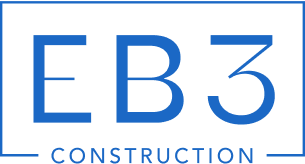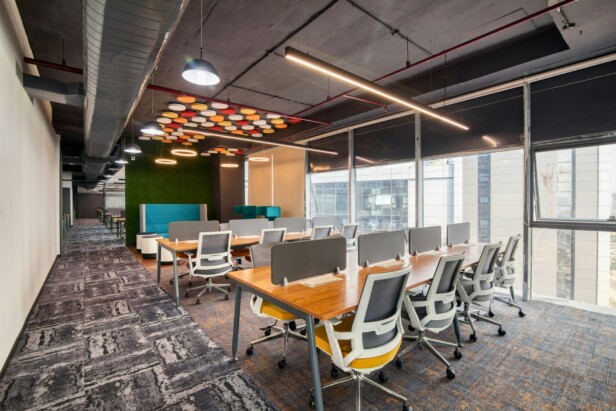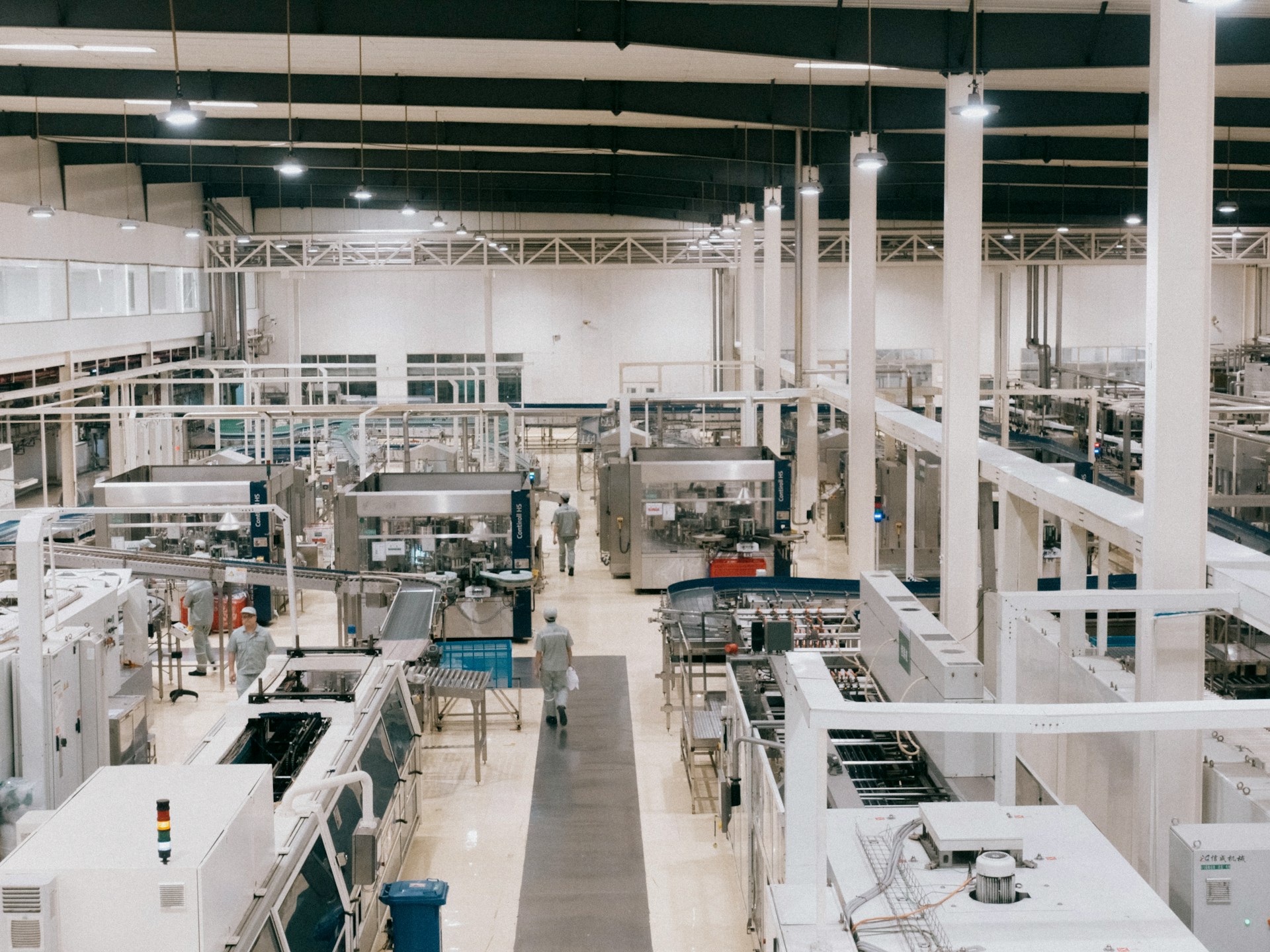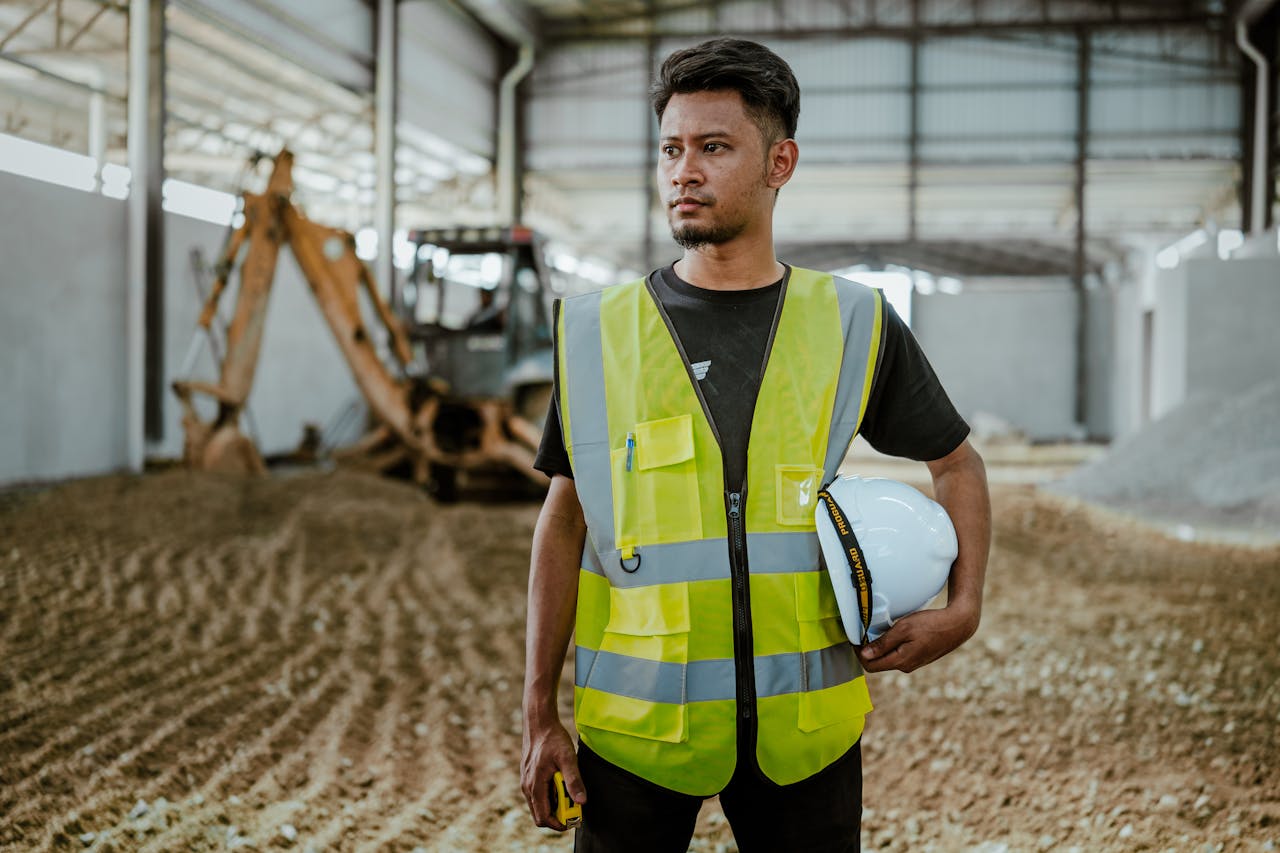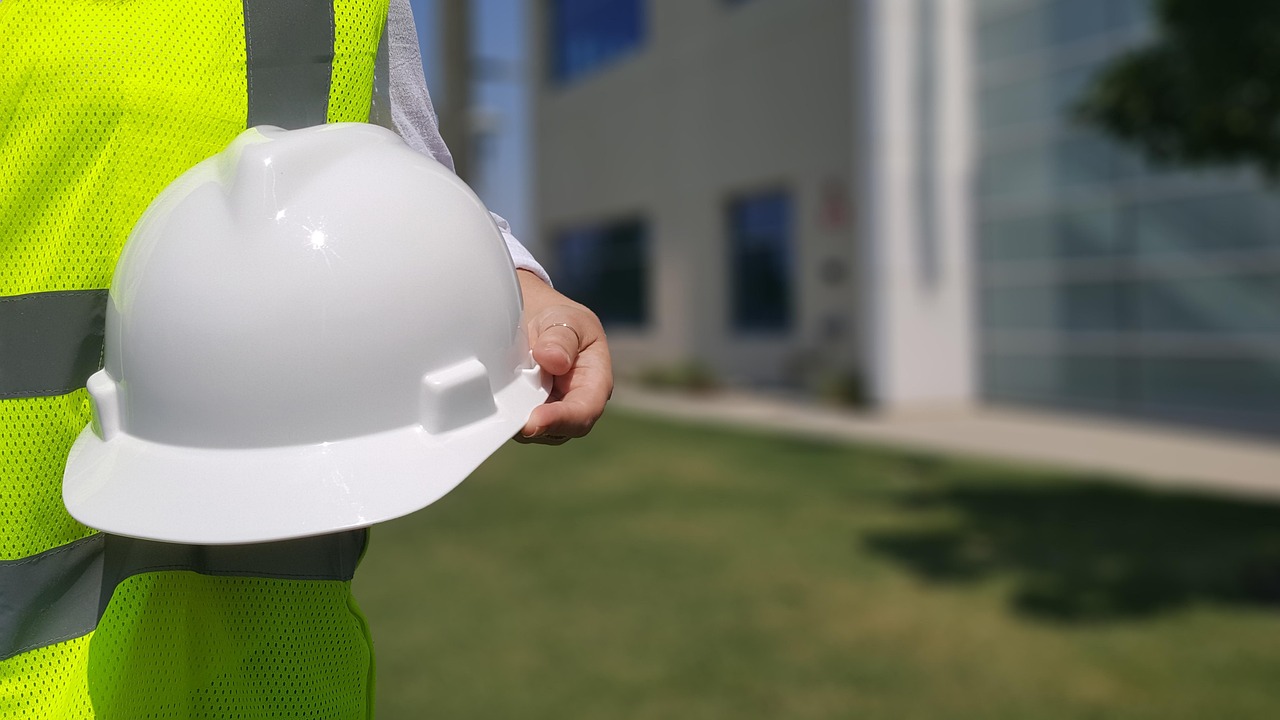Dallas commercial real estate reflects a thriving business environment where office interior construction drives workspace transformation. Modern office interior construction Dallas projects center around creating environments that balance productivity with company identity.
We approach office interior construction as a comprehensive process that encompasses both finish-outs and branded interiors across the Dallas–Fort Worth Metroplex. Our work involves coordinating open workspaces with glass partitions, integrating natural daylight through strategic planning, and expressing brand identity through carefully selected feature walls and collaborative areas.
How Do Office Interior Finish-Outs Differ From Branded Interiors?
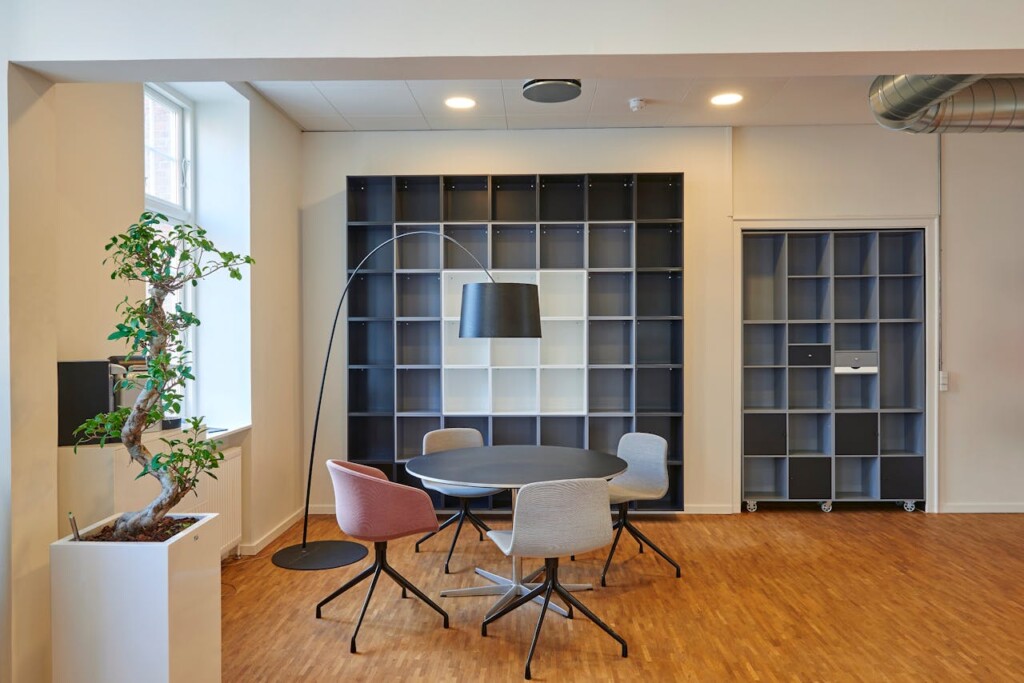
Office interior finish-out transforms raw commercial space into functional work environments. We install electrical systems, HVAC connections, flooring, lighting, and basic wall structures. The goal is professional workability – creating spaces where teams can operate effectively from day one.
Branded office interiors build upon this foundation with distinct design elements that communicate company identity. While finish-outs prioritize function, branded interiors weave company culture and values into every surface, fixture, and furnishing choice.
Functional Elements In Finish-Out Work
We approach finish-outs by establishing the building systems that enable daily operations. Fresh installations typically include walls, floors, electrical connections, air conditioning systems, and basic lighting. These elements form the skeleton that supports workspace functionality.
Finish-out work often involves coordinating with building owners on base building connections. We ensure electrical panels align with tenant needs, HVAC zones match workspace layouts, and plumbing supports break room and restroom requirements. The result is a professional environment ready for furniture and equipment.
Brand Expression Through Interior Design
Branded interiors add layers of visual identity that distinguish one company’s space from another. Feature walls become canvases for company colors, logos, or messaging. We coordinate lighting design to highlight these brand elements while supporting task requirements.
Material selections reinforce brand positioning. A tech startup might choose exposed concrete floors and industrial lighting to communicate innovation. A financial services firm could select rich wood finishes and traditional lighting to convey stability and heritage.
Glass Walls And Collaborative Design
Movable glass walls serve both functional and branding purposes in modern office design. These partitions maintain visual connection across workspace zones while providing acoustic separation when needed. Demountable glass systems allow layout modifications without extensive reconstruction.
Frosted glass walls balance privacy with openness. We install these systems to define conference rooms and private offices while preserving natural light flow. The glass treatments can incorporate subtle branding elements like company colors or patterns.
| Aspect | Finish-Out | Branded Interior |
|---|---|---|
| Objective | Create functional work environments | Express company identity and culture |
| Main Components | Walls, floors, HVAC, electrical, lighting | Color schemes, logos, custom furnishings, feature walls |
| Focus | Functionality and professional workability | Branding and aesthetic appeal |
| Systems Included | Building systems: electrical, HVAC, plumbing | Design elements integrated with functionality |
| Furniture | Standard, generic arrangements | Customized to align with brand design themes |
| Materials | Basic, functional | Selected to reflect brand positioning |
Furniture Planning And Space Coordination
Furniture planning differs significantly between finish-out and branded approaches. Standard finish-outs accommodate generic office furniture arrangements. Branded interiors coordinate furniture selections with overall design themes and company culture.
We work with furniture vendors to ensure pieces support both functional needs and brand expression. Open collaborative areas might feature casual seating in company colors. Executive areas could include custom millwork that reflects organizational hierarchy and values.
What Structured Process Supports Dallas Office Interior Projects?
We execute office interior projects through a methodical six-step approach that manages every element from initial client contact to project completion. This structured workflow ensures consistency across construction phases and maintains clear communication with property owners and stakeholders throughout the Dallas–Fort Worth Metroplex.
Discovery And Initial Assessment
The discovery call establishes project fundamentals and confirms client needs. We discuss workspace requirements, company culture, and functional priorities during this initial conversation. This step identifies project scope and determines whether the focus centers on finish-out work or branded interior elements.
Our team uses this call to understand budget parameters and timeline expectations. We also review the property type and location within Dallas to anticipate any site-specific considerations that might affect construction scheduling.
Comprehensive Consultation And Documentation
The in-person consultation involves detailed space measurement and thorough documentation of existing conditions. We review blueprints with clients to understand structural limitations and opportunities. During this phase, we establish investment levels and realistic timelines based on project complexity.
We photograph current conditions and assess electrical and plumbing systems that will integrate with the new design plan. This consultation also covers permit application requirements and identifies any pre-construction consulting needs specific to Dallas building codes.
Design Development And Technical Planning
Our design plan aligns architectural blueprints with electrical plans and plumbing coordination requirements. We develop CAD drawings that show precise furniture layouts and technology integration points. Digital renderings help clients visualize the completed space before construction begins.
Material selections consider both aesthetic goals and construction feasibility. We present finish options, furniture specifications, and lighting solutions that support the intended workspace function. This phase concludes with detailed construction documents ready for contractor coordination.
Coordinated Project Management
Project management coordinates all vendors and contractors through each construction phase. We maintain communication between electrical, plumbing, and finish contractors to prevent scheduling conflicts. Our management approach includes regular site visits and progress documentation.
We handle permit applications and ensure compliance with Dallas building requirements. Vendor coordination extends to specialty contractors for glass partitions, feature walls, and technology installations that require precise timing.
Systematic Installation And Placement
Furnishing installation follows the approved design plan and considers workflow requirements. We coordinate delivery schedules to minimize disruption and ensure proper furniture placement. Technology installation integrates with electrical plans established during design development.
Our installation team works systematically through each workspace area. We verify that all furniture, fixtures, and equipment meet specifications and function according to the design plan.
Final Inspection And Project Handover
The final reveal occurs after all construction updates and installations reach completion. We conduct comprehensive quality checks and address any remaining items. Client walkthrough ensures satisfaction with all project elements.
We provide documentation for all installed systems and furnishings. This final step includes operational guidance for any technology systems and maintenance recommendations for newly installed elements.
Which Delivery And Coordination Practices Improve Outcomes?
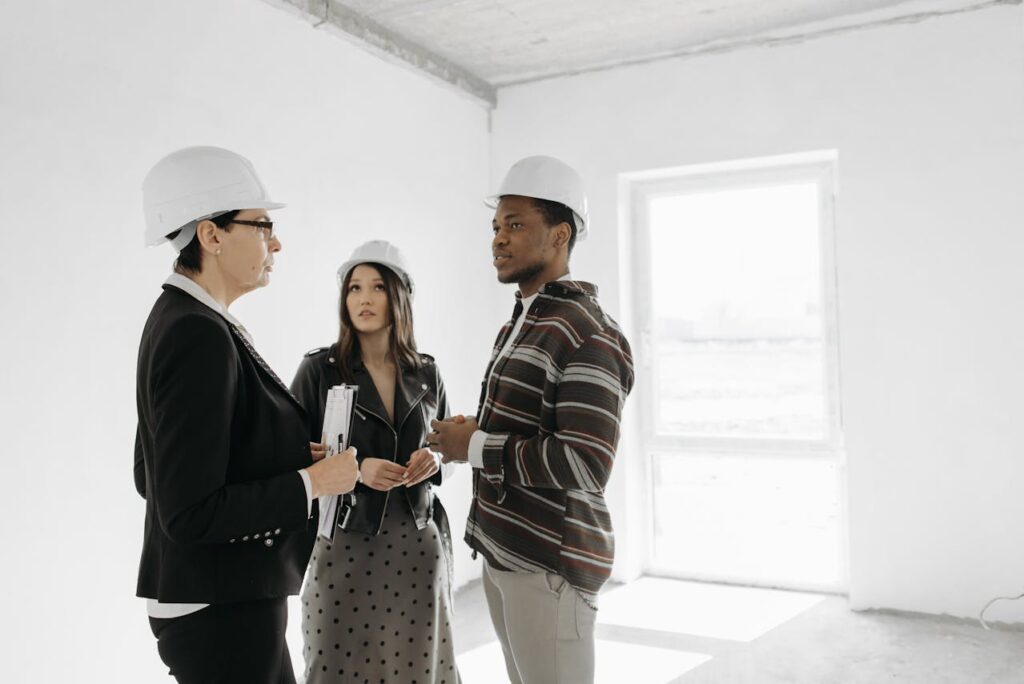
Successful office interior construction relies on delivery practices that reduce project friction and maintain predictability. Dallas teams implement collaborative delivery alongside continuous improvement methods to streamline workflows and enhance communication between stakeholders. These approaches create a foundation for smoother project execution and better overall results.
Project roundtables serve as central coordination points where all team members align on progress, address challenges, and make decisions collectively. Careful planning drives every phase, from initial space assessment through final installation. Technology integration supports both coordination and execution, enabling real-time updates and seamless information sharing across project participants.
Technology-Driven Coordination Methods
Virtual Design & Construction (VDC) with Building Information Modeling creates detailed digital representations that improve planning accuracy and reduce conflicts before construction begins. BIM enables teams to visualize space layouts, coordinate mechanical systems, and identify potential issues early in the process. This digital approach supports better decision-making and clearer communication with clients about design intent.
Lean Construction principles focus on waste reduction and value creation throughout project delivery. Teams apply continuous improvement methods to eliminate inefficiencies and optimize resource utilization. Pull planning techniques ensure work flows smoothly between trades, while visual management tools track progress and maintain accountability across all project phases.
Manufacturing And Supply Chain Integration
Offsite manufacturing allows for controlled production of interior components while site preparation continues simultaneously. Prefabricated elements arrive ready for installation, reducing on-site construction time and improving quality consistency. This approach works particularly well for standardized components like millwork, fixtures, and modular systems.
Supply chain management coordinates material delivery with installation schedules to minimize storage requirements and reduce delays. Teams track procurement timelines, manage vendor relationships, and ensure materials arrive when needed. Risk management practices identify potential disruptions early and establish contingency plans to maintain project momentum.
We benefit from established local trade partner relationships that provide reliable craftsmanship and responsive service. Our dedicated special projects and interiors division focuses specifically on commercial interior work, bringing specialized expertise to each project. Technology-enabled coordination systems keep all team members informed and aligned throughout the construction process, supporting efficient project delivery from start to finish.
Conclusion And Next Steps
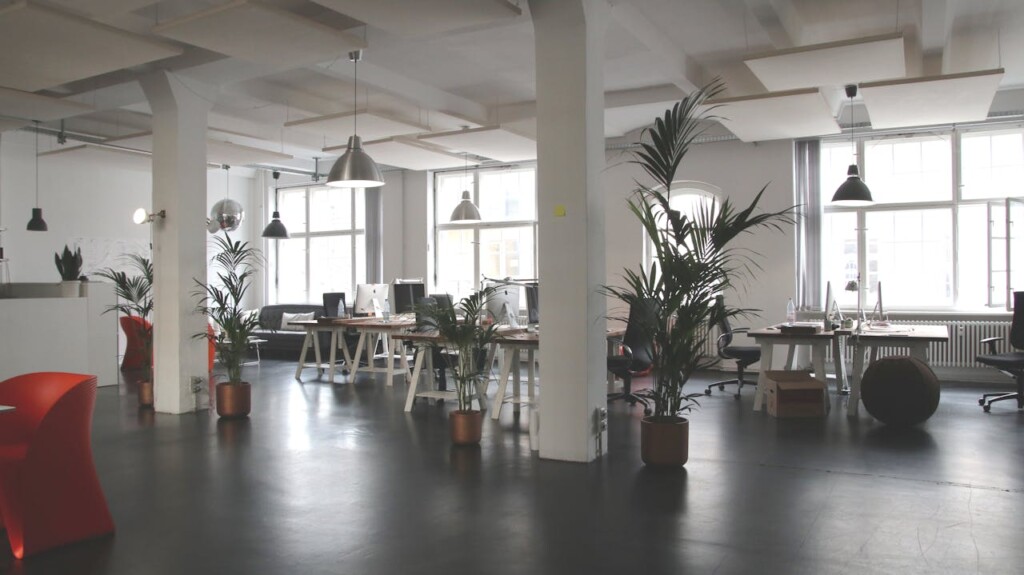
Office interior construction in Dallas blends function, brand, and collaboration to create workspaces that serve both operational needs and cultural expression. Finish-outs enable daily work by establishing professional environments with essential systems and layouts. Branded interiors express identity through strategic design choices that communicate company values and culture.
A structured process from discovery through final reveal keeps teams aligned throughout the project lifecycle. Collaborative delivery approaches, VDC/BIM technology, and established local trade partner relationships support quality results across the Dallas–Fort Worth Metroplex. These coordinated methods help ensure projects meet both functional requirements and design aspirations while maintaining schedule predictability.
Define goals for workability and brand expression early in your planning phase. Align blueprints and furnishing plans to avoid coordination issues during construction. Plan glass-walled conference rooms or feature walls strategically to support connection and visibility throughout your workspace. Set an early discovery meeting with your project team to confirm scope, timeline, and permitting needs before moving forward.
Ready to start your office interior project? Contact EB3 Construction to discuss your Dallas workspace transformation.
